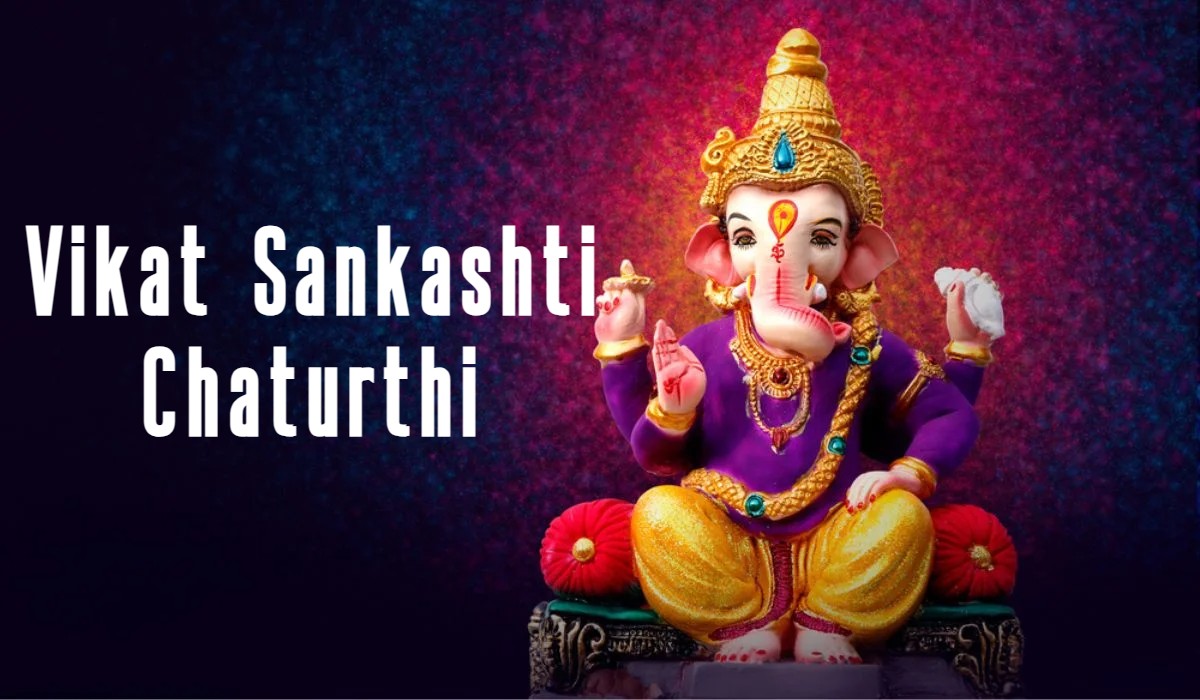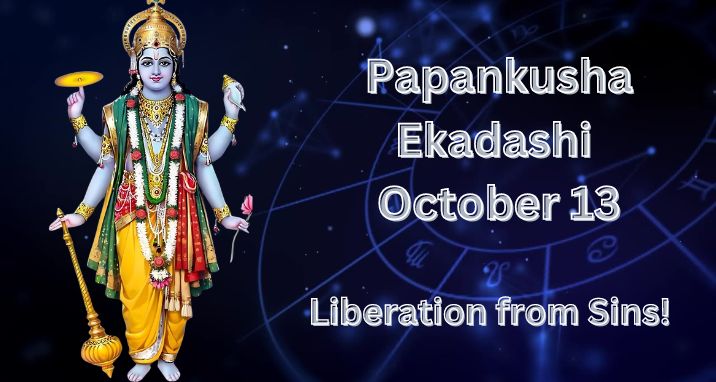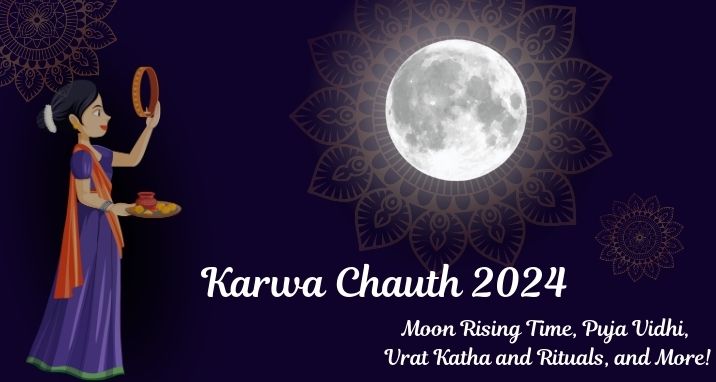Janmashtami: Significance, Rituals and Tithi!
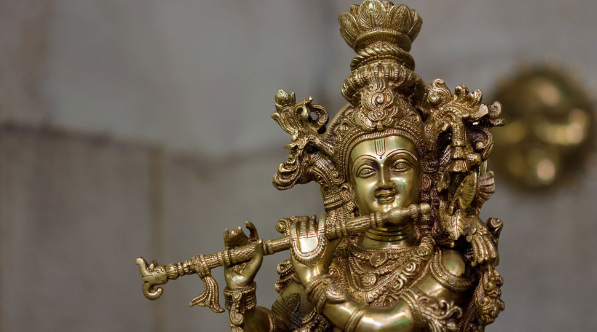
Shri Krishna Janmashtami, popularly called Janmashtami is one of the most widely celebrated Sanatan Hindu festivals all over the world. Hindus observe this day to celebrate Shri Krishna’s birthday, which happens to be on the Astami Tithi (eighth day) of the dark moon phase fortnight (Krishna Paksha) in the month of Bhadrapada (August and September, as per the English Calendar). The day becomes even more auspicious if it falls on Rohini Nakshatra as per the Hindu calendar, as Shri Krishna took birth in the Rohini Nakshatra. Shri Krishna was the eighth Avatar of Shri Vishnu Bhagwan, who took birth in Mathura in the Dwapar Yug to slay the demon king Kansa and also to reinstate Dharma by eliminating the evil forces from the world as he says in Bhagavad Gita, Adhyaya 4, Shloka 7 and 8:
यदा यदा हि धर्मस्य ग्लानिर्भवति भारत।
अभ्युत्थानमधर्मस्य तदात्मानं सृजाम्यहम् ॥४-७॥
परित्राणाय साधूनां विनाशाय च दुष्कृताम् ।
धर्मसंस्थापनार्थाय सम्भवामि युगे युगे ॥४-८॥
Meaning: Whenever There Is A Decline In Righteousness And An Increase In Sinfulness, O Arjun, At That Time I Manifest Myself On Earth.
Devotees of Sri Krishna celebrate his life and his teachings on the day of Janmashtami. He was the slayer of Demon King Kansa for his cruelty and wickedness and he descended on Earth to reestablish Dharma by eliminating evil, immoral and sinful forces from the world.
Krishnajanmashtami Date and Puja Tithi
Here, you will get the auspicious tithi timings of Shri Krishnajanmashtami:
- Nishita Puja Time- 11:59 PM to 12:44 AM, Sep 07
- Parana Time– After 12:44 AM, Sep 07
- Rohini Nakshatra Begins – 09:20 AM on Sep 06, 2023
- Rohini Nakshatra End Time- 10:25 AM on Sep 07, 2023
- Ashtami Tithi Begins – 03:37 PM on Sep 06, 2023
- Ashtami Tithi Ends – 04:14 PM on Sep 07, 2023
Janmashtami Decoration and Celebration
On Krishnajanmashtami day, Shri Krishna is adored with immense devotion and enthusiasm by Hindus all over the world. It is the time to celebrate his birth with great enthusiasm and seek his blessings too. This is considered one of the most auspicious days for Hindus and you will find them in a completely festive mood, which includes dressing up ceremonially, decorating all the mandirs (especially Shri Krishna mandirs) and houses, offering puja, preparing sweets, dressing up the small kids like Bal Krishna, chanting Shri Krishna Mahamantra, reading and listening to Bhagavad Katha, singing Radha Krishna bhajans, dancing to Krishna Bhanjans, Kirtans and much more.
Rocking a fully decorated cradle with Bal Krishna sitting on it is one of the most auspicious rituals observed on Janmashtami day.
Also, as per Hindu belief, every child is a Bal Krishna, so, devotees decorate their houses/mandirs and deck up their kids as Bal Krishna and pamper them with doodh, makkhan, malai (milk, homemade butter, milk cream) and other sweets and gifts. They are also swung on swings and mothers and aunts play Yashoda and Bal Krishna stories with them.
Shri Krishna Janmashtami Rituals
Janmashtami Fasting
Fasting is one of the most common rituals observed by Shri Krishna devotees all over the world. Devotees observe nirjala upvas (waterless fast). Most of the devotees do not consume grains and lentils until the fast is broken on the next day after Sunrise. Usually, those who do moderate fasting, consume only milk and milk products as they were the favourite of Shri Krishna.
After the entire pooja is over, devotees break their fast by having Panchamrit. The time of breaking the fast may vary, this is so because the time of performing pooja also differs from place to place. While some devotees choose to perform pooja at midnight and breakfast, others perform pooja in the evening and have food.
Shri Krishna Naam Jaap or Mantra Chanting
Devotees spend the day in Shri Krishna Naam Jaap and mantra chanting. They immerse themselves in singing devotional songs singing his leela, listening to Krishna Katha, Sankirtans and reciting hymns from the Gita. They also chant various Krishna mantras along with his 108 names and sing Krishna bhajans. Many temples observe all-day programmes that include plays, and dramas on Krishan Leela and Bhagavad Katha. Devotees participate in large numbers to attend these programmes.
Preparation of Sweets and Milk Products
No festival in Sanatan Hindu dharma is complete without some very delicious food, especially sweets. Therefore, there is a tradition of preparing various types of sweet dishes during Shri Krishna Janmashtami. Just like fasting, people also engage in feasting during festivals. So, various types of sweets are prepared that Shri Krishna was very fond of. Products made of milk like makkhan, dudh, dahi, misri, peda, kheer and many other sweets made of milk were his favourite items.
Apart from milk products, in some regions, traditional prasad ’Panchajiri’ is prepared. Panchajiri is made of five ingredients: powdered ginger, ‘suva’, coriander, sugar and ghee. People also add poppy seeds (khaskhas) and desiccated coconut shavings to it. There is also a tradition of preparing 56 bhogs (56 different items) for Shri Krishna on this day. All of them are prepared with Satvik ingredients.
Midnight Puja
Shri Krishna was born at midnight. This is when the statue of infant Krishna (Bal Krishna) is bathed and placed in a well-decorated cradle, in the form of Bal Krishna or Bal Gopal. Devotees rock Bal Gopal amidst the blowing of conch shells and the ringing of bells, arti is performed.
Significance of Krishna Janmashtami
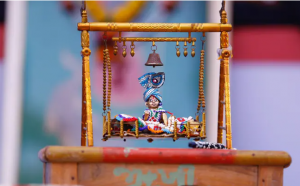
According to the Bhagavad Gita, every time the evil overpowers the good and every time there is a decline of Dharma, Shri Krishna will reincarnate to eliminate the evil and save the good and reestablish Dharma (righteousness). Hindus celebrate Shri Krishna Janmashtami to encourage Dharma and discourage Adharma. The festival is also a time to celebrate togetherness as it brings people from all walks of life together.
Birth of Bhagwan Shri Krishna and Janmashtami
Bhagwan Shri Krishna was born to Mata Devaki and Vasudeva inside a karagar (lock-up cell) around 5,200 years back. The story goes on like Kansa, the demon king of Mathura when he comes to know he will be killed by Devaki’s (his sister) son, he puts both Devaki and her husband Vasudeva in a lock-up cell just after they get married.
Kansa was an evil and cruel king of Mathura and the people of Mathura were sacred of his torturous nature as he did not allow them to live peacefully. People used to pray to the Almighty to rescue them from the clutches of Kansa. Finally, one day there was a prophecy that Devaki’s eighth son would kill him and free the inhabitants of Mathura and the nearby region from the rule of the wicked Kansa. Kansa got deranged and put both Devaki and Vasudeva behind bars. He decided he would annihilate every single child born to Devaki and Vasudeva. He was successful in killing the first 6 siblings of Shri Krishna. But he failed to kill the 7th child of the couple who was born Balaram. Shri Krishna’s elder brother, Balarama took birth through Rohini in safer confines as he was safely transferred to Rohini’s (Vasudeva’s first wife) womb from Devaki’s womb, while he was still in the womb.
And finally, the wait was over when Devaki gave birth to her eighth son. One of the most adorable and worshipped gods in the Hindu pantheon, Shri Krishna took birth as Devaki’s and Vasudeva’s eighth son on the 8th day of the second fortnight which is the dark moon phase (Krishna Paksha) of the month of Shravana, very close to the month of Bhadrapada Krishna Paksha as per the Barhaspatyamana, in the year of Visvavasu, about 5,250 years ago (from now 2023), which means around 3227-3228 B.C.
On his birth, the doors of the Karagar (jail) opened automatically and Devaki and Vasudeva
shifted newborn Krishna to Gokul, where he handed over Bal Krishna to Nanda (his cousin) and Yashoda, where he stayed till the age of 12. In return, Nanda and Yashoda gave their newborn daughter Yogmaya to Vasudeva.
Shri Krishna’s Bal Leela
At the age of 12, Shri Krishna killed Kansa, who was also his maternal uncle (mama). Before killing Kansa, Krishna also killed Putna, the demoness who was sent by Kansa to kill infant Krishna. She smeared her breasts with poison and tried to feed them to infant Krishna, but she was killed by him. Bal Krishna showed many godlike phenomena that were possible only by a Supreme Being, which he was. He also defeated Kaliya Naag and asked him to leave the River Yamuna as the people of Mathura were scared of him. As a child, he even picked Govardhan Parvat (Mountain) on his left hand’s little finger and saved the people and animals of Mathura from torrential rain and defeated Indra Dev as he tried to punish the people of Mathura for not appeasing him.
Toddler Shri Krishna once showed the entire universe inside his mouth to his foster mother Yashoda when she feared he had eaten mud and asked him to open his mouth and show her.
Even before he became a teenager, Bal Krishna had shown countless godlike leelas (divine play) to the inhabitants of Mathura and nearby places. People had already started admiring and praising him.
It is his Bal Roopa that is worshipped largely on the day of Shri Krishna Janmashtami.
Why is Shri Krishna Also Known as Purna Purush?
Shri Krishna is known as Jagannath (Jagat Ka Nath), meaning the Supreme Lord of the Universe. He is also called Purna Purush for he was proficient in 16 different art forms and was the owner of 8 forms of Lakshmi. This makes him one of the most adored Hindu Deities. The 16 Kalas of Sri Krishna are the divine arts or attributes of Sri Krishna that make him Purna Avatar – the complete avatar.
1. Daya – Compassion
2. Dharjya – Patience
3. Kshama – Forgiveness
4. Nyaya – Justice
5. Nirapeksha – Impartiality
6. Niraskata – Detachment
7. Tapasya – Meditation and Spiritual Powers
8. Aparchitta – Invincibility
9. Danasheel – Beneficience, Bestower of all wealth in the world and nature.
10. Saundarjyamaya – Beauty Incarnate
11. Nrityajna – Best of Dancers
12. Sangitajna – Best of Singers
13. Neetibadi – Embodiment of Honesty
14. Satyabadi – Truth Itself
15. Sarvagnata – Perfect master of all arts, such as poetry, drama, painting etc.
16. Sarvaniyanta – Controller of All
For more insight on Janmashtami decoration and celebration and the exact time and puja vidhi, you can talk to our astrologers here.






